by scott.gillum | Feb 5, 2015 | 2015, Marketing
Last month (January 6 to be exact,), the Washington, DC area received its first snow of the season. Dropping 3 – 5 inches of snow in the area, it sent school boards scrambling to assess driving conditions and whether to delay opening or closing schools for the day. Most school systems got it right; but one didn’t, and it set off a social media storm that would take over Twitter.
Fairfax County Public Schools (FCPS) in Virginia missed the call and its students (and parents, to some extent) made certain they knew. More snow fell than was forecasted and froze quickly, making the roads and sidewalks treacherous. Close to 30 accidents – including a school bus – were reported during the early morning commute.
Students using the hashtag #closeFCPS expressed their outrage at having to report to class on time in the hazardous conditions. They also became real-time weather reporters by posting videos and photos of snow conditions, roadways and accidents.
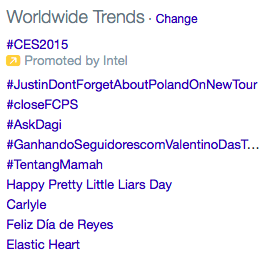 On what was the first day of the Consumer Electronics Show (CES) and the day after the premier of The Bachelor, a bunch of outraged kids in Fairfax County became the top story of the day, trending no. 1 on Twitter nationwide, second worldwide, and received coverage by the Wall Street Journal, Washington Post, BuzzFeed, USA Today, The Huffington Post, as well as making lead story on all the local news channels. And as the day went on, the hashtag took on a life of its own.
On what was the first day of the Consumer Electronics Show (CES) and the day after the premier of The Bachelor, a bunch of outraged kids in Fairfax County became the top story of the day, trending no. 1 on Twitter nationwide, second worldwide, and received coverage by the Wall Street Journal, Washington Post, BuzzFeed, USA Today, The Huffington Post, as well as making lead story on all the local news channels. And as the day went on, the hashtag took on a life of its own.
How’d they do it?
For students who were supposed to be in class, they certainly spent an inordinate amount of time on their smartphones. As a parent of a teenager who attends a school following the snow policy determined by FCPS rulings, I had a first row seat to the social media frenzy. What can their success teach us? Here are five critical components that I observed:
- A common cause – Nothing rallies the Twitter troops more than a common cause. This one was a “no brainer.” A snow day is a rare and precious gift from the snow gods. This was “cause” marketing at its purest.
- A common enemy – The villain of the day was Ryan Mcleveen, a school board member who had developed a strong bond with students through social media (Twitter in particular). Over 41,000 people – many of them students –follow Ryan because he is the first to report school delays and closings…until he didn’t. That’s when the students made him the target of their tweet bombs.
- Short-term objective – Combine a common cause with a short window of opportunity, and you have a heightened sense of urgency to ignite the base and drive the effort.
- Humor – This is what I believe had caused the effort to trend and continue trending well past the decision point for canceling school. The students played a game of one-upmanship with Instagram posts and tweets, with the most humorous being retweeted over and over. As the day progressed, it was the entertainment value rather than the cause that kept the hashtag trending.
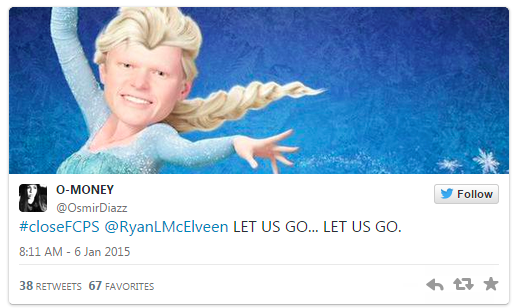
- The bandwagon – Once the hashtag trended, teenagers from other school districts, states and even countries jumped in to support the cause and/or to participate in the fun, many having no idea what the hashtag meant.
The Result
Beyond a formal apology from the school board, the students also got their snow day a day later (along with the following two days of delayed starts) while the rest of the school systems in the area were back on a regular schedule. But what they may have gained, more importantly, was influence.
The question is: Were the delays and school closing due to the weather/road conditions, or was it because of the public shaming on Twitter? We may never know, but let’s see what happens on the next snowy day in DC.
Incidentally, that was supposed to be where my story ended. But with snow in the forecast for the following week, I decided to wait to submit this post for obvious reasons. On Tuesday, January 13, the DC area received less than a half an inch of snow. And while other school districts announced a two-hour delay, Fairfax County closed its schools. #FCPSstudents #Winning
by scott.gillum | Oct 27, 2013 | 2013, Marketing
What company do customers feel most connected to emotionally?
Apple? Nope. Amazon? Sorry. It must be Nordstrom’s then, right? Not even close. To find the company that has the strongest emotional connection with customers, you have to leave the consumer world behind. Blows your mind, doesn’t it.
According to new research from Google and the CEB, customers are more emotionally connected to B2B brands, and it’s not even close. The company customers say that they are most emotionally connect to is…Cisco.
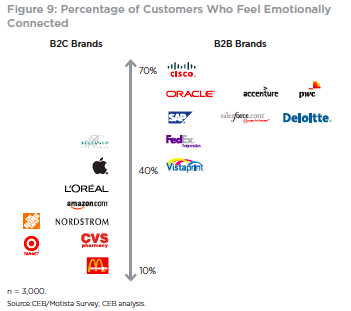
Why? Well, it’s about understanding risk. The more risk involved with a purchase decision, the higher the likelihood of an emotional connection. Increase the variables related to risk (e.g. losing a job, wasting corporate investments) and you have the ingredients for an emotionally involved buyer. Personal risks peak when others are counting on you to make the right decision and the stakes are highest.
How did Cisco become number 1? It has to do with Cisco’s ability to reduce risk with buyers. Forrester ‘s Evaluate Your Channel Partner Loyalty Program, surveyed over 250 hi-tech business partners to understand the drivers of loyalty. Partners were asked to select the reason/s “why their most strategic vendor is their most important vendor” (see the table below).
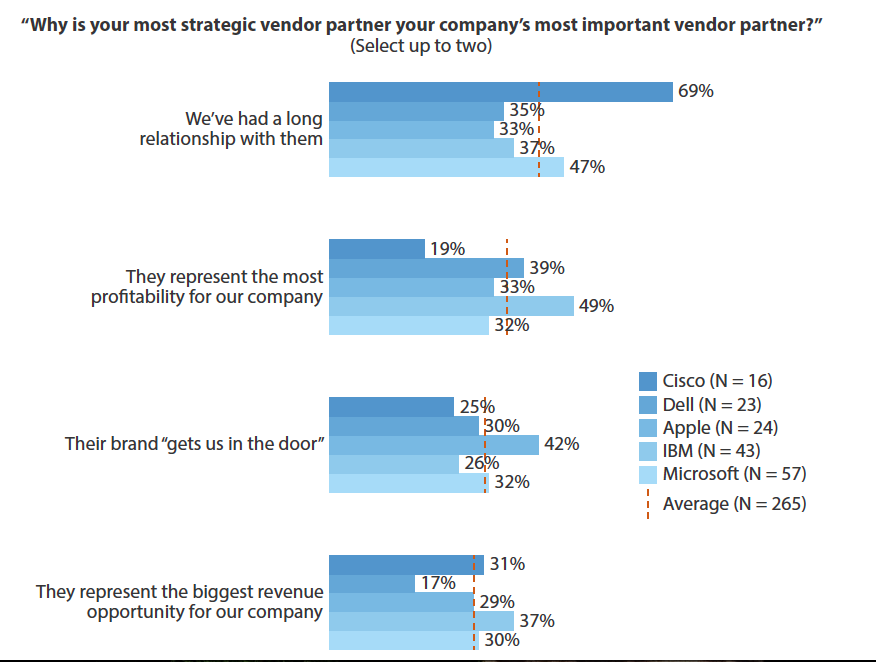 Partners, buyers of Cisco gear, selected Cisco for the strength of the relationship, despite that fact that Cisco was also the most profitable vendor (established earlier in the research). Cisco partners value the relationship more highly than other partners, 26% more.
Partners, buyers of Cisco gear, selected Cisco for the strength of the relationship, despite that fact that Cisco was also the most profitable vendor (established earlier in the research). Cisco partners value the relationship more highly than other partners, 26% more.
The reason is related to how Cisco is able to create and communicate what the CEB and Google research describes as “personal value” consisting of four parts; professional, social, emotional and self-image benefits. Some of which are communicated, others realized through the customer experience. For example, existing customers understand the “personal value” associated with an existing vendor 2X that of non-customers.
Cisco has built a strong “personal value” equation by investing heavily in their partner’s success. It supports them professionally through training and certification programs. Invest in the brand to support the emotional bond and self-image, and in sales and marketing activities to drive demand.
All of which reduces the risk associate with failure, be it personally or professionally. And in return, they trust Cisco with their livelihood, valuing the “Relationship” above rational drivers, like profits and revenue.
Getting Personal and Emotional
How can we leverage this insight? To start, focus on better communicating “personal value” to non-customers. The research found that brand messaging connects with buyers early on, but the excitement wanes over time as we move down the buyer journey into the evaluation phases.
The rational brain takes over to assess risk, and the complications associated with the purchase, at this point as much as 50% of the potential deals stall or fall out of the process. Risk impacts their initial positive emotions, and unfortunately, we don’t much to help them.
To counter those feelings engage them with personal-value messaging, go beyond just using feature/functionality language (functional benefits) to describe products or services by combining the emotional and self-expressive benefits as well (see below).
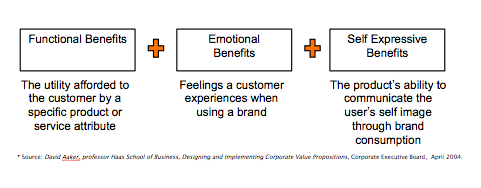
Like Cisco, understand how your products or services impact buyers. Does it make them feel “smarter” by having the latest technology, or more “secure” in their role. Although buyers are individuals with unique personalities, and should be treated that way, they most likely share the same fears, uncertainties, and doubts we have in our roles.
Get to know them, like you know yourself. Stop assume they are always rational and buy on price and/or functionality. And finally, realize that there are customers who are emotionally connected to your brand, and/or highly value their relationship with your organization, and when they say that they “love your product or company”…they actually might just mean it.
by scott.gillum | Jul 14, 2012 | 2007
Original October 18, 2007
For the first time I am seeing B2B marketing attract top talent. B2C has gotten more than its fair share because of the attractiveness/sexiness of life in Advertising, the CPG industry, and other Brand/Creative centric areas. Top Schools like
Kellogg have been sending their best and brightest into those jobs for years while over in the world of B2B, marketing has been seen as the red headed stepchild to the favorite son Sales.
Outside a few companies in Hi-Tech, B2B marketers were usually guys who couldn’t cut it in sales, senior executives who were parked in marketing until retirement, or young attractive women in sales support roles. But the times are a changing…big time.
With the rise in interactive marketing, new digital media, and the need to measure ROI, the world of B2B is now attracting serious talent.
Young marketers are now coming into the space. They understand how to use the tools of Web 2.0 to build communities, how to better communicate concepts and ideas, and how to measure the impact of these efforts. They are now becoming smarter at understanding buyer behavior and how to tap into it, influence it, and measure it with tools. Maybe even smarter than the chosen ones…
 On what was the first day of the Consumer Electronics Show (CES) and the day after the premier of The Bachelor, a bunch of outraged kids in Fairfax County became the top story of the day, trending no. 1 on Twitter nationwide, second worldwide, and received coverage by the Wall Street Journal, Washington Post, BuzzFeed, USA Today, The Huffington Post, as well as making lead story on all the local news channels. And as the day went on, the hashtag took on a life of its own.
On what was the first day of the Consumer Electronics Show (CES) and the day after the premier of The Bachelor, a bunch of outraged kids in Fairfax County became the top story of the day, trending no. 1 on Twitter nationwide, second worldwide, and received coverage by the Wall Street Journal, Washington Post, BuzzFeed, USA Today, The Huffington Post, as well as making lead story on all the local news channels. And as the day went on, the hashtag took on a life of its own.









